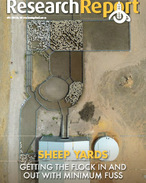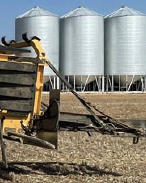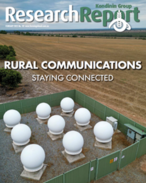This article is 8 years old. Images might not display.
The research project aims to demonstrate for the first time, how a second-generation Satellite-Based Augmentation System (SBAS) can use signals from the Global Positioning System (GPS) and the Galileo constellation, as well as using dual frequencies to achieve even greater GNSS integrity and accuracy.
Over two years, the project will validate applications across nine industry sectors including agriculture. The CSIRO believes SBAS will overcome the current gaps in the nation’s mobile and radio communications and, when combined with on-ground operational infrastructure and services, will ensure that accurate positioning information can be received anytime and anywhere within Australia.
Lockheed Martin Australia and New Zealand chief executive Vince Di Pietro said the company was excited to have an opportunity to work with both Geoscience Australia and the Australian industry to demonstrate the best possible GNSS performance.
“Lockheed is proud that Australia will be leading the way to enhance space-based navigation and industry safety," Di Pietro added.
“Users must be confident in the position solutions calculated by GNSS receivers. The term 'integrity' defines the confidence in the position solutions provided by GNSS," he said.
"Industries where navigation and safety are crucial, want assured GNSS integrity. Ultimately, the second-generation SBAS testbed will broaden the understanding of how this technology can benefit safety, productivity, efficiency and innovation in Australia's industrial sectors.”
Basic GNSS signals are accurate enough for many civil positioning, navigation and timing users. However, these signals require augmentation to meet higher safety-of-life navigation requirements. This new second-generation SBAS ‘testbed’ will mitigate that issue.
Once the SBAS testbed is operational, basic GNSS signals will be monitored by widely-distributed reference stations operated by Geosience Australia.
An SBAS testbed master station, installed by teammate GMV, of Spain, will collect that reference station data, compute corrections and integrity bounds for each GNSS satellite signal, and generate augmentation messages.
"A Lockheed Martin uplink antenna at Uralla, New South Wales will send these augmentation messages to an SBAS payload hosted aboard a geostationary Earth orbit satellite, owned by Inmarsat," said International Strategy and Business Development manager for Lockheed Martin Space Systems Rod Drury.
"This satellite rebroadcasts the augmentation messages containing corrections and integrity data to the end users. The whole process takes less than six seconds."






















